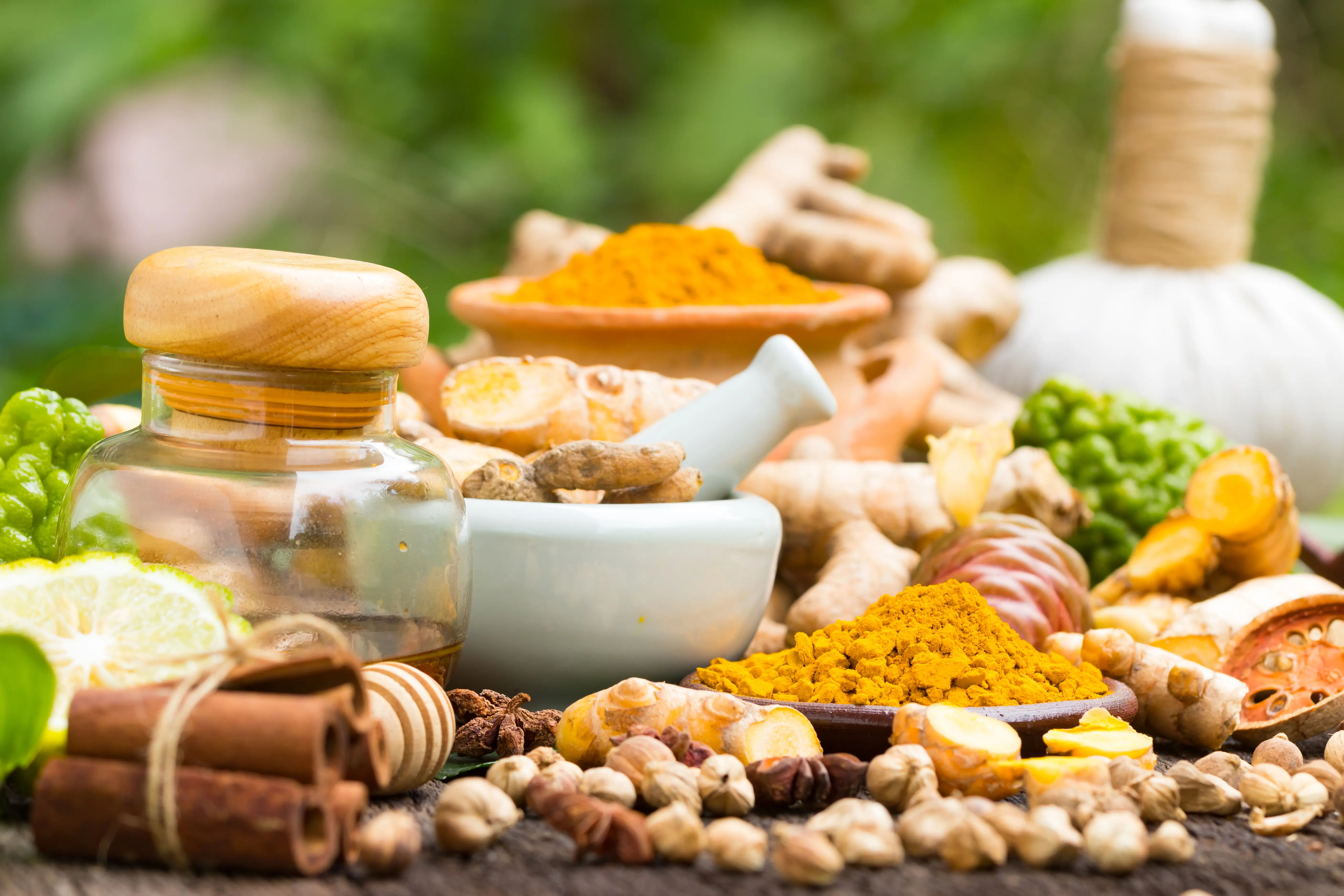Chayote (Chow Chow): Ayurvedic Benefits, Uses, and Side Effects
Learn about chayote (chow chow): Ayurvedic benefits, uses, nutrition, and side effects. Evidence-based tips, FAQs, and safe ways to add it to your diet.

Written by Dr. J T Hema Pratima
Reviewed by Dr. Shaik Abdul Kalam MD (Physician)
Last updated on 12th Nov, 2025
.webp?tr=q-80,f-webp,w-350,dpr-2,c-at_max 700w)
Introduction
If you enjoy light, crisp, and versatile vegetables, chayote (also called chow chow, mirliton, or vegetable pear) deserves a place on your plate. Popular in South Asia, Latin America, and beyond, this pale-green squash has a mild flavor that fits into many dishes—from sambars and stir-fries to salads and stews. People often ask about chayote benefits, how it fits among ayurvedic vegetables, and what its nutrition profile looks like. This guide explains what science and traditional wisdom say, how to use chayote safely, and who should be cautious.
What is Chayote?
Chayote (Sechium edule) is a member of the gourd family (Cucurbitaceae), the same family as zucchini, cucumber, and squash. It is typically pear-shaped with pale green skin, a crisp yet tender texture, and a mild, slightly sweet taste. The peel and the soft seed are edible; the flesh can be eaten raw or cooked.
Nutrition at a Glance
Chayote is a low-calorie, water-rich vegetable that can help you meet daily production goals. Per 100 grams of raw chayote (about 1 cup diced), you typically get:
• Calories: around 19
• Carbohydrates: about 4.5 g
• Fiber: about 1.7 g
• Protein: about 0.8 g
• Fat: about 0.1 g
• Vitamin C: around 7–8 mg
• Folate: around 90–95 mcg
• Potassium: around 120–130 mg
These numbers can vary slightly by source and growing conditions, but they show why chayote is popular in healthy eating patterns—it delivers hydration and micronutrients for very few calories.
Chayote Benefits: What the Science and Tradition Suggest?
While large, chayote-specific clinical trials are limited, its overall nutrient profile aligns well with widely recommended dietary patterns. Here are evidence-aligned ways chayote may support health:
Weight-friendly and high-volume eating
• Very low in calories and rich in water, chayote adds bulk to meals without adding many calories. This quality can help with portion control and satiety when replacing higher-calorie ingredients as part of an overall balanced diet.
Digestive health support
• The fiber in chayote supports regularity. Increasing fiber gradually and drinking enough water can help maintain digestive comfort.
Heart health helpers
• Fiber and potassium are nutrients associated with heart health. Diets rich in vegetables and fruits that contain potassium and fiber are linked with healthy blood pressure and cardiovascular benefits when combined with reduced sodium intake and an overall balanced diet.
Blood sugar-friendly meal building
• Chayote is low in carbohydrates and contains fiber, which can help moderate the overall carbohydrate load of a meal. Pair it with protein, healthy fats, and whole grains to support more steady energy.
Folate for life stages
• Chayote provides folate, a B vitamin important for cell growth. Adequate folate intake is particularly important before and during early pregnancy.
Antioxidant support
• Like other gourds and green vegetables, chayote contains vitamin C and plant compounds that contribute to antioxidant intake. A varied, plant-forward diet provides a spectrum of antioxidants that support overall health.
Chayote in Ayurveda: A Practical Perspective
Ayurveda emphasizes seasonal, individualized eating. While chayote itself is native to the Americas and may not be described in classical Ayurvedic texts, many practitioners approach it similarly to other light, hydrating gourds used in Indian kitchens.
General qualities
• Chayote is mild, water-rich, and easy to digest when cooked well, qualities that often make it a gentle addition to meals for many people.
Seasonal alignment
• In warm weather, chayote’s hydrating, light character can feel refreshing. In cooler months, pair it with warming spices and cooking methods (like sautéing or stewing) to make it more grounding.
Ayurvedic-inspired kitchen tips
• To support digestion, cook with spices such as cumin, ginger, mustard seeds, turmeric, black pepper, and coriander.
• Combine with legumes (moong dal, toor dal) and whole grains (millets, brown rice) for balanced meals.
Note: Ayurvedic guidance is personalized. If you follow Ayurveda for health concerns or digestive issues, consult a qualified practitioner for individualized advice.
Consult a Top Ayurveda Specialist for Personalised Advice
How to Use Chayote Day-to-Day?
Prep
• Rinse well. Chayote’s raw sap can temporarily irritate or numb the skin in some people. If you’re sensitive, wear gloves or lightly oil your hands before peeling and cutting.
• The peel is edible; you can leave it on if tender. The soft inner seed is also edible and mildly nutty.
Cooking ideas
• South Asian: Add to sambar, kootu, poriyal, curries, or dal-based stews.
• Stir-fries: Pair with carrots, bell pepper, green beans, tofu, paneer, or eggs.
• Soups and stews: Use in place of or alongside zucchini and squash.
• Raw: Julienne for slaws or add thin slices to salads with lime, chili, and herbs.
• Stuffed: Halve, steam or bake until tender, and stuff with spiced legumes or veggies.
Flavor partners
• Spices: mustard seeds, cumin, coriander, turmeric, ginger, black pepper, chili
• Herbs: cilantro, mint, dill
• Acids: lemon, lime, tamarind
• Textures: peanuts, sesame, coconut, toasted seeds for crunch
Building Meals with Ayurvedic Vegetables
If you are exploring ayurvedic vegetables as part of a balanced plate, chayote fits well among gourds and leafy greens. For a simple framework:
• Half your plate: mixed non-starchy vegetables (e.g., chayote, spinach, cauliflower, bell pepper)
• One quarter: protein (dal, beans, tofu, fish, eggs, or lean meats)
• One quarter: whole grains or starchy vegetables (millet, brown rice, whole wheat roti, sweet potato)
• Add healthy fats (ghee, olive oil) and spices to support taste and digestion
Chayote and Nutrition for Specific Goals
• Weight management: Low-calorie, high-volume foods like chayote help create satisfying meals for fewer calories.
• Heart health: Pair chayote with potassium-rich and fiber-filled foods, while moderating sodium, as part of an overall heart-supportive diet.
• Blood sugar management: Combine chayote with protein and whole grains; limit added sugars; keep portions consistent.
• Hydration: Water-rich vegetables contribute to overall fluid intake, complementing your daily water consumption.
Who Should Be Cautious?
Chayote is widely eaten and generally safe as a food. Still, consider the following:
• Skin irritation when prepping: The raw sap can cause temporary numbness or irritation in some people. Wear gloves and rinse hands and the cutting board after peeling.
• Allergies: True allergy to chayote is uncommon, but any food can cause reactions. If you experience itching, swelling, hives, or breathing trouble after eating, seek medical care.
• Blood sugar medications: If you take diabetes medicines, remember that improving diet quality can affect glucose levels. Monitor and discuss adjustments with your clinician.
• Chronic kidney disease: Chayote is not high in potassium compared with many vegetables, but if you have strict potassium limits, review portion sizes with your healthcare provider or dietitian.
• Food safety: Wash produce, use clean utensils, and cook thoroughly when needed, especially for those who are pregnant, older adults, or immunocompromised.
Simple, Healthy Serving Ideas
• South Indian-style chow chow kootu: Chayote simmered with moong dal, coconut, cumin, and tempered mustard seeds.
• Quick stir-fry: Chayote, garlic, ginger, chili, and tofu finished with a squeeze of lime.
• Crisp salad: Thinly sliced raw chayote tossed with lemon, olive oil, chili flakes, mint, and roasted peanuts.
• Light soup: Chayote with onion, celery, vegetable stock, and a touch of turmeric and black pepper.
• One-pan meal: Chayote, chickpeas, tomatoes, and spinach with cumin and coriander over millet or brown rice.
How Often Can You Eat It?
As a non-starchy vegetable, chayote can be enjoyed several times a week as part of a varied, plant-forward diet. Aim to mix it with other colorful vegetables to cover a broad spectrum of nutrients.
Consult a Top Ayurveda Specialist for Personalised Advice
Consult a Top Ayurveda Specialist for Personalised Advice

Dr. Pepsy Jose
Panchakarma Practitioner
14 Years • BAMS, MD Ayurveda (Panchakarma)
Bengaluru
AYURRHYTHM HOLISTIC CLINIC AND PANCHAKARMA THERAPY, Bengaluru

Dr. Shiv Prakash Singh
Ayurveda Practitioner
19 Years • BAMS
Kolkata
Vedhive Ayurveda College Street, Kolkata

Dr. Rik Sadhukhan
Ayurveda Practitioner
8 Years • BAMS
Kolkata
Vedhive Ayurveda, Ballygunge, Kolkata

Dr. Anjan Das
Ayurveda Practitioner
8 Years • Ayurvedacharya ( B.A.M.S )
Dumdum
Vedhive Ayurveda Clinic, Dumdum
Consult a Top Ayurveda Specialist for Personalised Advice

Dr. Pepsy Jose
Panchakarma Practitioner
14 Years • BAMS, MD Ayurveda (Panchakarma)
Bengaluru
AYURRHYTHM HOLISTIC CLINIC AND PANCHAKARMA THERAPY, Bengaluru

Dr. Shiv Prakash Singh
Ayurveda Practitioner
19 Years • BAMS
Kolkata
Vedhive Ayurveda College Street, Kolkata

Dr. Rik Sadhukhan
Ayurveda Practitioner
8 Years • BAMS
Kolkata
Vedhive Ayurveda, Ballygunge, Kolkata

Dr. Anjan Das
Ayurveda Practitioner
8 Years • Ayurvedacharya ( B.A.M.S )
Dumdum
Vedhive Ayurveda Clinic, Dumdum
More articles from General Medical Consultation
Frequently Asked Questions
1) What are the top chayote benefits?
Chayote is low in calories, provides fiber, folate, vitamin C, and potassium, and is versatile in cooking. Including it may support weight-friendly meals, digestive regularity, and heart-healthy eating patterns when combined with an overall balanced diet.
2) Is chayote good for diabetes?
It can be. Chayote is low in carbohydrates and provides fiber, so it can help build blood sugar-friendly meals when paired with protein, healthy fats, and whole grains. Monitor your response and work with your healthcare provider if you manage diabetes.
3) Can I eat chayote raw, including the peel and seed?
Yes. The peel and the soft inner seed are edible. Many people enjoy chayote raw in salads or slaws. If the skin feels tough, peel it after a quick blanch, or cook until tender.
4) How does chayote fit into ayurvedic vegetables?
While chayote may not appear in classical texts, cooks and practitioners often treat it like other light, hydrating gourds. It pairs well with digestive spices (like cumin, ginger, and turmeric) and can be tailored to your needs and the season.
5) Are there any side effects?
Most people tolerate chayote well. The main issue is mild, temporary skin irritation or numbness from the raw sap during peeling. Wearing gloves or oiling your hands can help. Allergies are uncommon but possible with any food.




